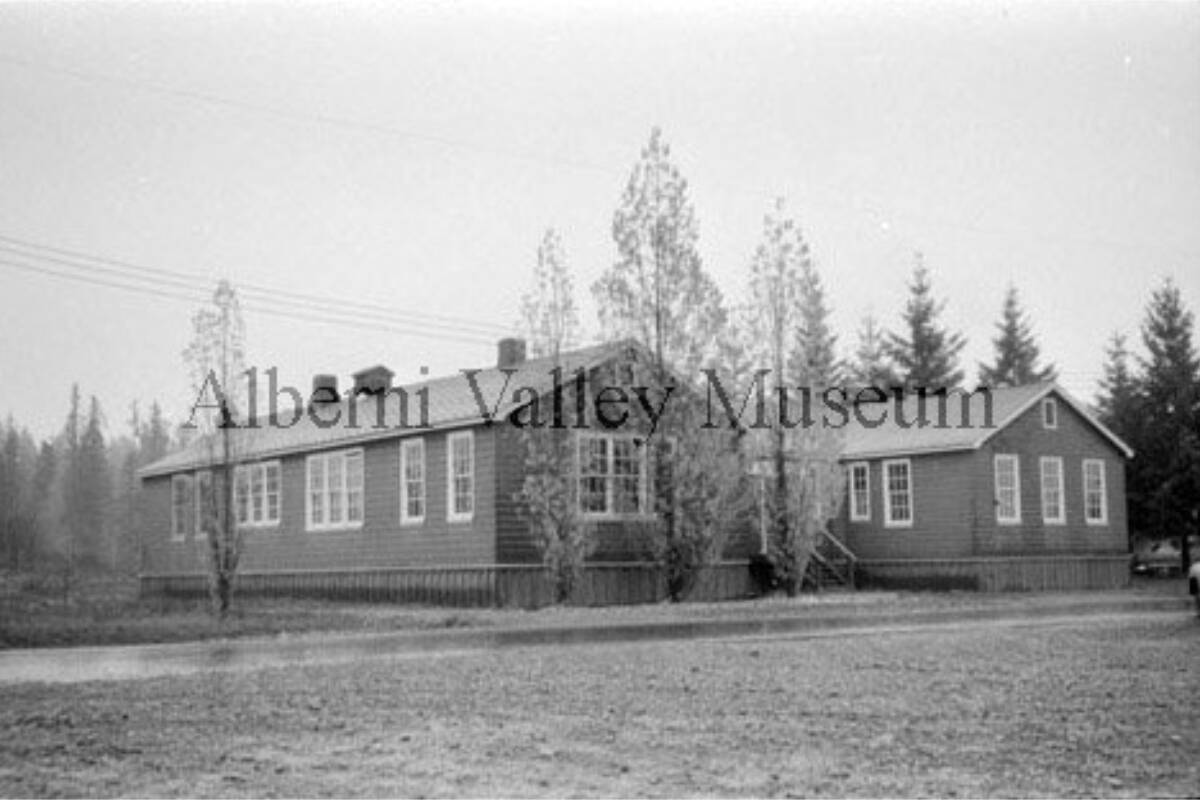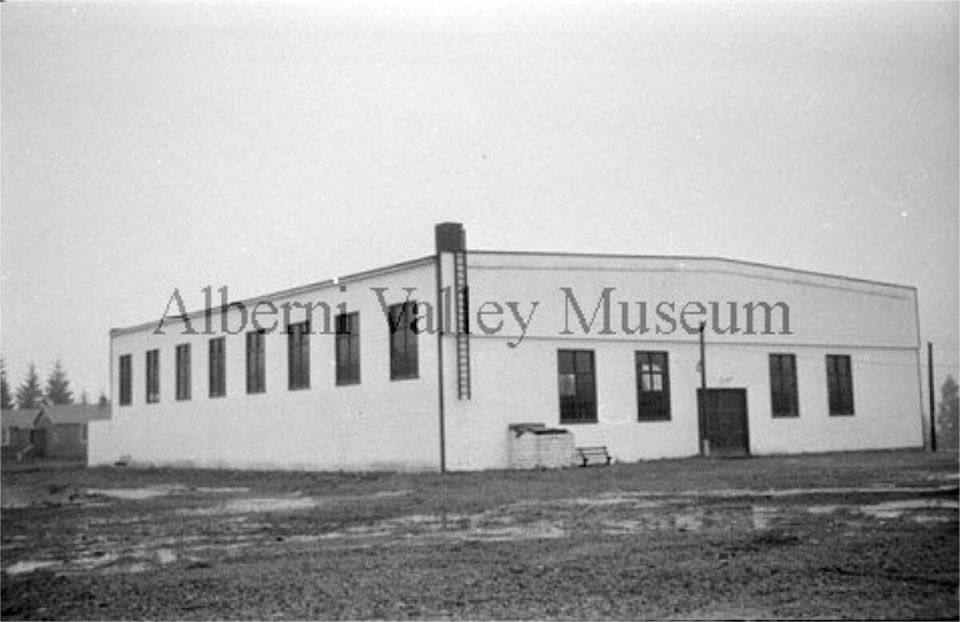By DIANE DOBSON
Special to the AV News
The Glenwood district in Port Alberni is a unique neighbourhood, one that evolved, in part, from an army camp. The camp itself was located from the north side of Hollywood Street to Roger Street and east of Glenwood Drive.
The late George McKnight was a local writer and historian. He not only wrote about but lived in the Glenwood area since the mid-40s. His writings hold a wealth of information.
By 1942, the Second World War was well underway and the Department of National Defence began construction of an army camp in Port Alberni. It may be hard to imagine now but, at the time, there was nothing much along 10th Avenue and no development at all north or east of 11th Avenue and Morton Street. The whole area north of Roger Street where the army camp was to be built was covered in the same dense second growth.
The army camp was large, containing 21 main buildings, housing at one point more than 2,000 men. Most of the buildings were H-huts, similar to the Kin Hut you can see at the Alberni District Fairgrounds (former army camp site) today. The H-huts consisted of two wings—each 24 feet wide by 120 feet long—on either side and a centre portion containing a washroom and coal furnace joining the wings.
Other buildings included the headquarters on Vimy Street, garages, shops and storehouses. Still others were the fire hall at 10th and Roger and the drill hall—present-day Glenwood Centre. There was also an RCEME garage and shops, later remodeled into the town’s first curling rink until it burned down in 1962. There was also an army hospital built on property bordered by Eighth and Ninth avenues.
A look at an undated map of the area found in the Alberni District archives shows all of the street names were military-based: Driver Street, Sapper Street, Bayonet Street, etc. When the camp closed down a few years later the city changed the names to what exists today: Rosewood, Dogwood, Hollywood, etc. All were changed with the exception of Vimy Street, which remains, a remnant of that which came before.
War ended in 1945 and the men were coming home. Port Alberni started booming. The plywood plant was operating at full capacity and, in 1947, the pulp mill was being constructed. Employment brought families to the Alberni Valley by the hundreds but housing was extremely short.
About this time, the federal government established the War Assets Disposal Corporation to dispose of surplus facilities. The Port Alberni army camp fell into this category. It was the logical answer to an emergency housing crisis. After much discussion and delegations to Ottawa, the deal was done. On April 22, 1947, the city purchased the whole 237-acre facility for the sum of $70,000.
McKnight notes that veterans and their families were given preference for the available accommodation, first rented for $14 to $18 per month. Still, this was not considered a great bonanza for them. What they received was a 40-foot section of a 120-foot building with 10-foot-high ceilings no partitions and no bathroom.
“Accommodation was scarce in the two small towns [Alberni and Port Alberni] after the war,” historian Jan Peterson wrote in Twin Cities. “At one time, 230 families lived in the army camp in makeshift housing enduring frozen water pipes, uninsulated walls, draughty windows, lack of privacy and all other discomforts involved during some of the coldest winters in that century.”
Before long, the city sold many of the buildings at a price of $7 per running foot. Again, the buyer was purchasing an empty shell that had to be moved. It was a common sight to see an army camp building being moved, many in the nearby Glenwood area and others throughout the town. They were not limited to housing either. There are many examples of how these buildings lived on: the Alberni Valley Rescue Squad building that stood at Stirling Field for years; Beaver Creek Hall; Gyro Centre and the Royal Canadian Legion building in Alberni are but a few of them.
One camp building was removed and taken to Beaver Creek, where it became a three-room school. The Alberni District High School moved into the old army camp in 1946-47, a year teachers, students and members of the fledgling school board preferred to forget. The West Coast Advocate newspaper noted the high school took up six huts, the army cookhouse became the school cafeteria and the army garage housed the school’s buses. Students didn’t have desks at the beginning; when they did, the roofs leaked so much they often had tins on their desktops to catch the drips. They wore their coats to class, with temperatures inside sometimes dipping below zero Celsius.
Thankfully, the high school’s sojourn at the army camp was shortlived: a new high school was constructed on Burde Street between 12th Avenue and Anderson Avenue and opened in the fall of 1951.
In the meantime, the Glenwood community began to grow. Neighbours helped one another, from painting walls to pulling stumps from the yard, making way for grass. They got busy providing partitions, insulation and heating to make their homes livable.
The area became a close, friendly neighbourhood, one safe for the many children to play. McKnight’s recounting of a Halloween party of the time emphasizes the point: “We held our own parties for the youngsters. We would all contribute a few dollars to buy fireworks. On one occasion Ellis Johnson and I were in charge of setting them off. All the families were gathered…children in costumes, bonfire lit and the fireworks waiting in a box.
“We set off a rocket. It rose a few feet in the air then came full speed right down in the box. It all went off at once! One glorious burst of flame and a great cloud of smoke. It was all over in a few seconds.”
Birthday parties, Christmastime and other celebrations were shared. For many who lived in it, Glenwood was memorable and was considered the best time of their lives. As McKnight notes, “We were all young then and raising our families, we were experiencing the benefit of cooperation and accomplishments. It was all very much worthwhile.”
Diane Dobson is a volunteer with the Alberni District Historical Society and regularly writes historical articles for the ADHS Facebook page. Reprinted with permission. Additional information from Susie Quinn, AV News editor.

